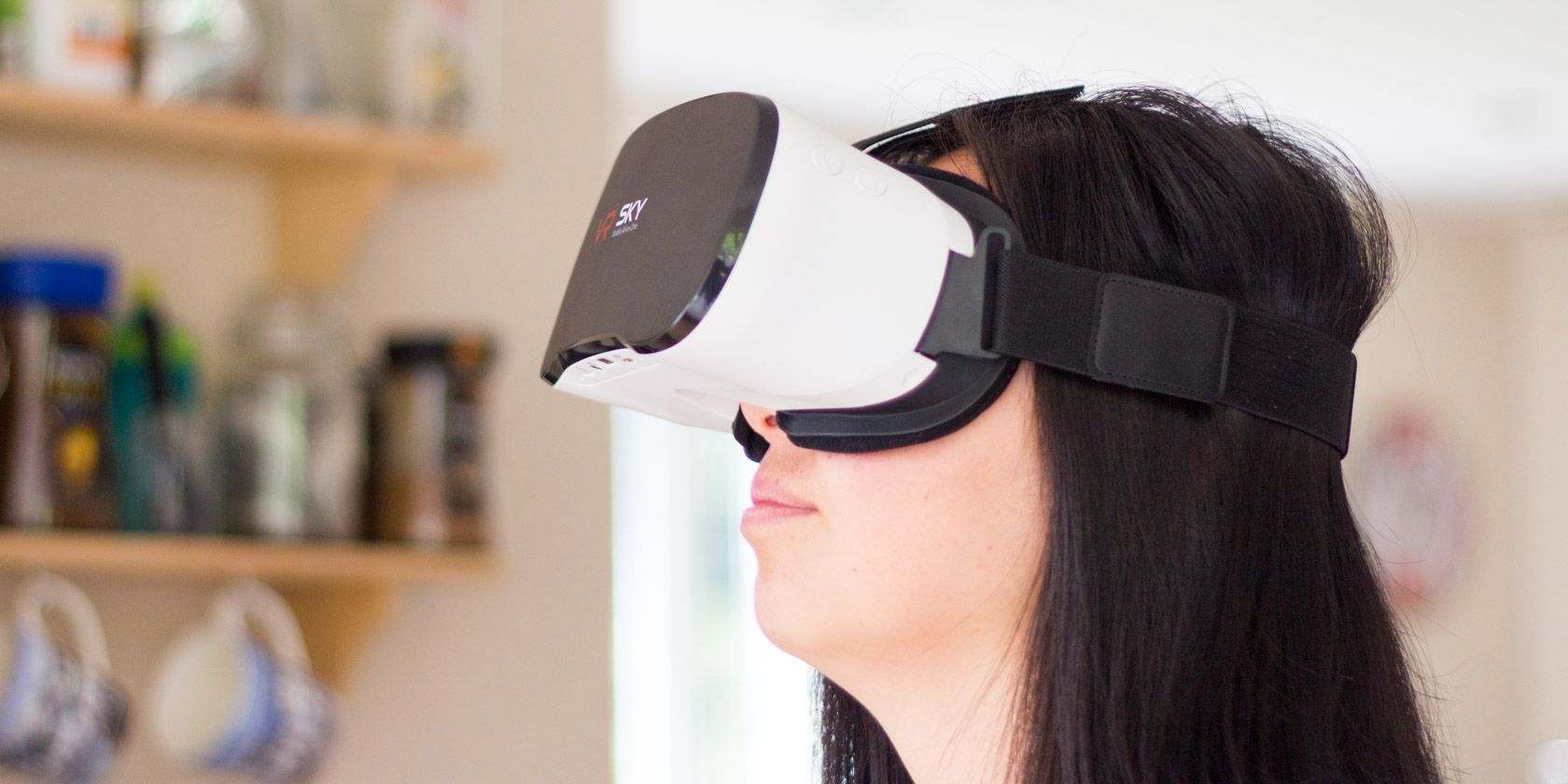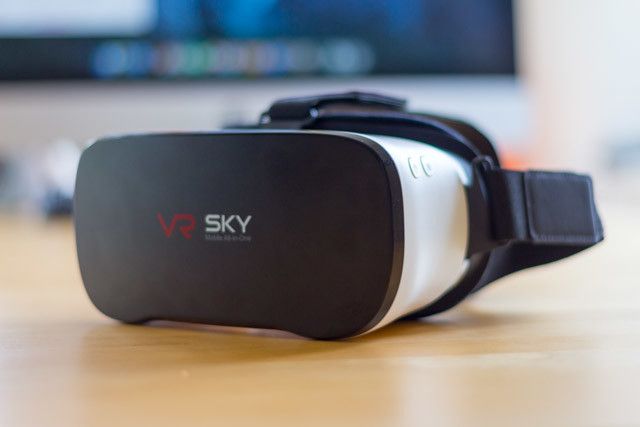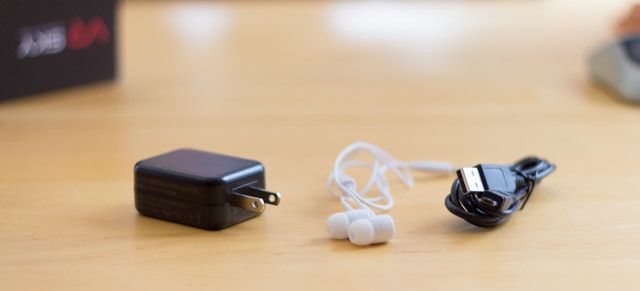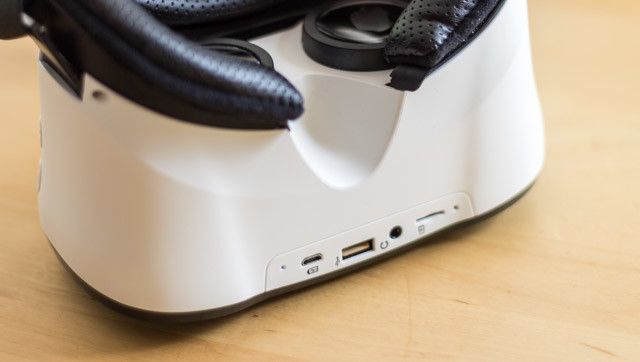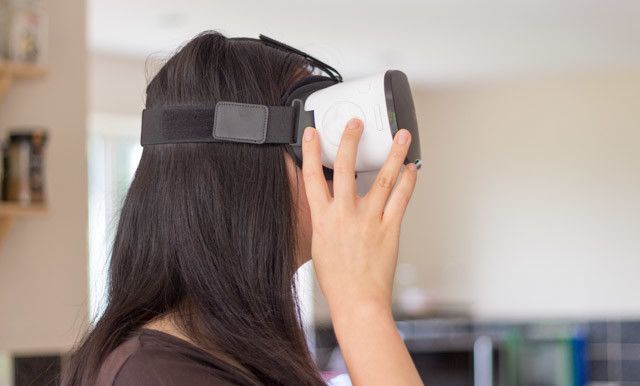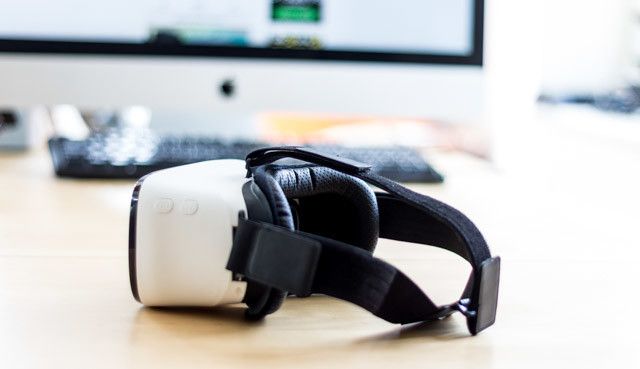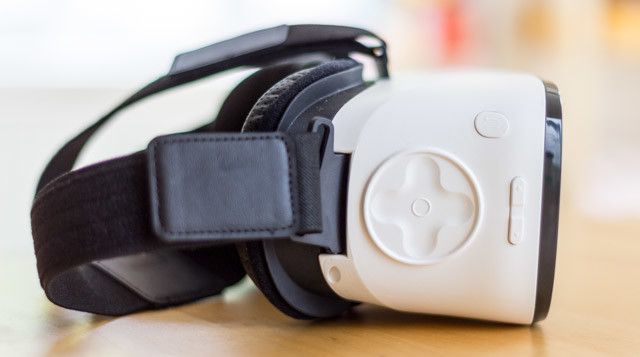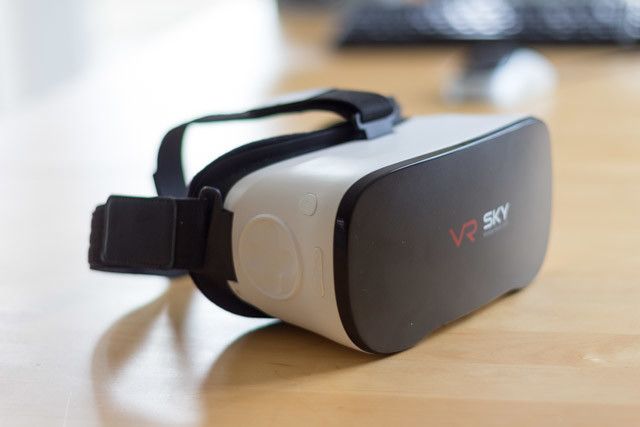VR Sky CX v3
Cardboard VR headsets are so much effort: fiddle around with your phone, find the right app and launch it; latch it into the awkward phone holder with lenses that don't quite match your phone; strap it on; then take it off again because you realise you didn't press the start button. Eugh.
The VR Sky CX v3 is different: it's a complete, all-in-one, Android-based VR headset. You don't need to put your phone inside – it has a built-in screen and runs Android 4.4 with a custom VR launcher environment. It's available for less than $135 from GearBest.com ($120 if you use the coupon code LHSKY), and it's actually quite cool.
Mobile VR
While tethered desktop VR systems like the Oculus Rift (our review) and HTC Vive (our review) have gotten off to a great start in Western countries, the expense and space requirements are prohibitive in Asia, which has instead shown a preference for mobile VR solutions.
I've had mixed feelings about mobile VR so far. On the one hand, for anyone who's experienced desktop-class room scale VR experiences like those on the HTC Vive, mobile VR is simply a poor imitation. On the other, I understand not everyone can afford the $600 to $1000 for the headset, plus a $1000 or more gaming PC to go with it; nor can they dedicate a special room in their house to a full VR playspace (although I do believe in future, we'll all have a VR room).
Until now though, your options for mobile VR have been limited to either absurdly expensive high-end branded solutions like Samsung Gear VR ($700 handset + $100 VR holder); or super low budget bring-your-own-device generic Cardboard VR ($15 to 100), which are fiddly to control, often don't match the lenses, and look terrible.
That's why I'm pleased to see a new breed of all-in-one devices, and the VR Sky CX v3 is a great starter device. Let's take a look at the specs.
VR Sky CX V3: Under the Cover
- 100° Field of View
- 1920 x 1080p 60Hz screen (so each eye receives half, or roughly 1080 pixels square)
- 4000mAh battery
- Allwinner H8 CPU, 2Gb RAM
- Power VR SGX544 GPU
- 16Gb onboard storage; upgrade via MicroSD slot (up to 32Gb FAT32)
- USB accessory port (OTG), and MicroUSB charging port
- Bluetooth 4.0, 802.11 b/g/n Wi-Fi
- 3.5mm headphone socket
- Capacitive controls on the side
- Weighs 413g
- No IPD or screen distance adjuster (IPD is a fixed 64mm)
- "Nibiru" VR OS, a heavily customized Android 4.4 skin
The device comes with some natty in-ear buds, but you'd be wise to use your own headphones. If I had one complaint, this would be it. The Oculus Rift has shown that built-in headphones vastly simplify the process of "jacking in" to VR, without a mess of cables. For something that bills itself as "all-in-one" device, I'd really like to have seen a similar design of attached earphones.
With expandable storage, USB accessory port and Bluetooth 4.0, you should have no problems with connecting accessories. The Wi-Fi receiver isn't great though, and suffered from connectivity issues in areas of my house that other devices were at least passable.
Visual Quality and Comfort
Out of the box, I found the resolution, field of view, and comfort to be great – which is pleasantly surprising. Unfortunately, the image is quite laggy – it's certainly not the same silky smooth motion you get from a GearVR or Oculus Rift. You'll want to avoid quick movements.
The 1080p screen gives a per-eye resolution equal to that of PlayStation VR, though slightly lower than the Oculus Rift and significantly lower than a Gear VR. The field of view and brightness is also just as good as desktop-class headsets, though the refresh rate is noticeably lower.
The aspherical lenses presents no glaring artifacts or an unusual amount of "screen door effect"; overall things look great, but there is color aberrations toward the edges . The lack of IPD (Inter-Pupillary Distance) adjustment is going to exclude those outside of the norm though; more than a couple of millimeters away from 64mm and your eyes will strain, or cause sickness as they try to accommodate.
In terms of comfort, the strap is easy to adjust and my glasses fit inside fine. At 413g, it's no heavier than a cardboard case and phone; in comparison the Oculus Rift is 470g, while the HTC Vive is 555g.
Content and Controls
Content is arguably the weakest point of the whole mobile VR ecosystem, but let's look at what you'll find.
360° videos: a spherical video that you sit in the middle of. These have received a resurgence in popularity with VR, and we're starting to see higher quality cameras [Broken URL Removed] for capturing scenes in 4K, so you can expect this to be an area of growth in the coming years. Ultimately, they may turn out to be as much of a fad as 3DTVs. The current crop of 360° videos are typically very low resolution (such as anything taken with the Ricoh Theta).
3D 180/360° videos: at a lower resolution or larger file sizes than regular 360° videos, due to the need to encode a separate view for both eyes, 3D versions offer increased immersion (more like "actual VR"), but at the cost of more visual artifacts or distortion where camera stitching occurs.
Native Cardboard apps: games and interactive experiences. These are a mixed bag of quality. Most Cardboard VR apps are compatible, though you'll find some interact awkwardly with the headset's built-in VR layer. Some apps will shown immediately in 3D; some you'll see both the right and left eye view, so you'll need to tap the VR menu tool and disable VR mode so they work natively. There is no standard for interface or control schemes, so some apps expect a gamepad, while some expect you to tap the screen to make selections before launching into VR (you can enable an emulated mouselook from the quick tools); while others just work great with the built-in scroll and tap mechanism. Within VR (formerly VRSE) worked with neither, and I had to plug in a mouse just to get the screen to scroll so I could select a video. After downloading The New York Times "Displaced" experience, I found the video quality to be appalling, but the emotional connection is there. Of the few games I tried, Radial-G just refused to run. None of these flaws is the fault of the headset – it's just the lack of standards around Cardboard VR and Android in general. If you do plan to play games though, plan on buying a Bluetooth gamepad too.
I should also note that you can run standard Android apps, of course. They'll appear floating in front of you on a large virtual screen, thanks to the underlying "Nibiru" VR emulation layer that the system is running. If you've watched the review video, you'll see that I kept the headset on the whole time, reading my script from a virtual Google Doc.
Should You Buy a VR Sky CX v3?
It's clear that the VR Sky CX v3 is primarily a passive, media consumption device. It's your own private cinema; it's for immersive videos of all kinds. The videos are never going to super-high quality thanks to the reduced screen resolution and 4Gb file limit of FAT32 formatted SD cards, so don't expect to be viewing your 3D BluRay rips. Any media formatted for GearVR should work fine. You may have some success with Cardboard VR games, but don't expect to be blown away.
It's not fair to compare the device to desktop tethered headsets, and you shouldn't consider it as alternative. Though the visual quality of the display might be on par, the graphics system driving it and the content available is vastly different.
So, is it worth $150? If you already own a GearVR compatible headset, then obviously the $99 GearVR holder is a better choice for you. If you own another high-end mobile handset with decent graphics processor, again, some kind of hard shell Cardboard holder may be your better option. If you have a budget Android device, or just want something more suited to VR without the hassle of extricating your handset from a holder each time, then VR Sky CX v3 is a good choice.
Pick yours up now for $135 from GearBest ($120 with coupon LHSKY).
[recommend]The VR Sky CX v3 fills a mid-range segment of the market nicely, and has great quality visuals for the price. Designed as an all-in-one VR headset means you get a screen that matches the lenses, the interface controls you need, and no fiddling around with your regular smartphone.[/recommend]

